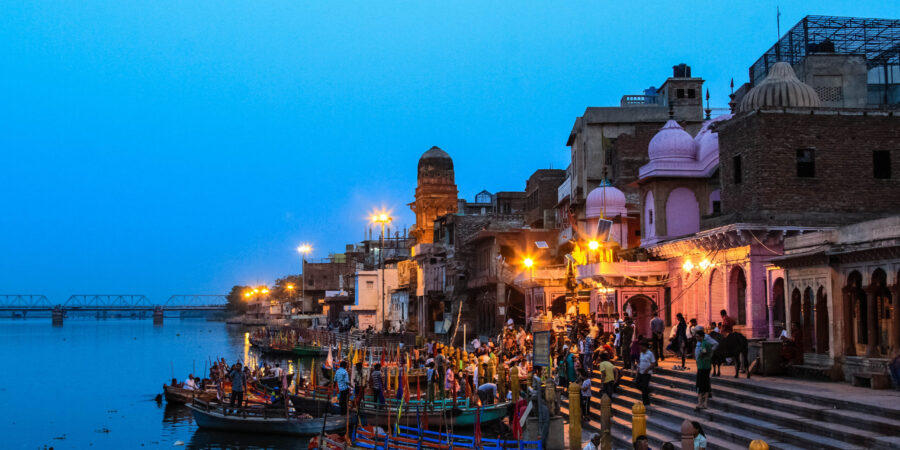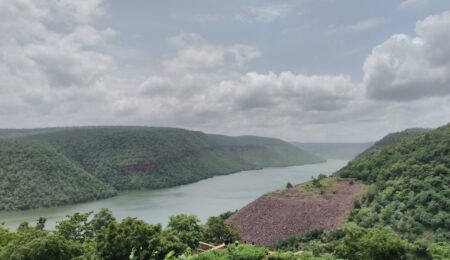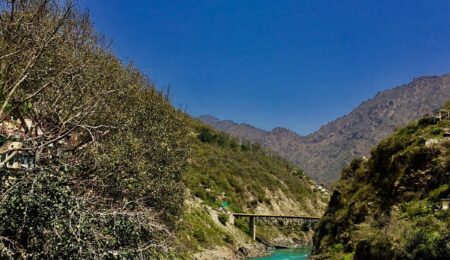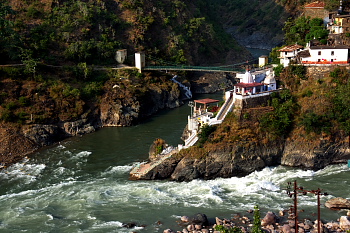 Flowing through the heart of North India, the Yamuna River holds a special place in the spiritual and cultural landscape of the country. Often referred to as the sister of the holy Ganga River, the Yamuna is considered one of the sacred rivers of India, bearing witness to centuries of civilization, mythological tales, and religious rituals. From its source in the pristine Yamunotri Glacier to its confluence with the Ganga at Allahabad, the Yamuna River weaves its way through history, leaving an indelible mark on the minds and hearts of millions.
Flowing through the heart of North India, the Yamuna River holds a special place in the spiritual and cultural landscape of the country. Often referred to as the sister of the holy Ganga River, the Yamuna is considered one of the sacred rivers of India, bearing witness to centuries of civilization, mythological tales, and religious rituals. From its source in the pristine Yamunotri Glacier to its confluence with the Ganga at Allahabad, the Yamuna River weaves its way through history, leaving an indelible mark on the minds and hearts of millions.
The Yamuna River is also known as the “river of death” as it is believed to be where the souls of the dead go. The Yamuna River is also considered the place of rebirth for Hindus. The Yamuna River is one of the most sacred rivers in India and is worshipped by Hindus.
The Yamuna River originates from the Yamunotri Glacier, nestled in the Garhwal Himalayas of Uttarakhand. It flows through Himachal Pradesh, Haryana, Delhi, and Uttar Pradesh before meeting the Ganga River in Allahabad. The river courses through a diverse range of landscapes, including Uttarakhand’s rugged mountains, Haryana’s plains, and Delhi’s bustling city. Along its journey, the Yamuna nourishes fertile agricultural lands and supports numerous towns and cities along its banks.
In Hindu mythology, the Yamuna is considered a goddess and a divine presence. It is believed to be the daughter of Surya, the sun god, and the sister of Yama, the god of death. The river is mentioned in ancient texts like the Vedas, the Ramayana, and the Mahabharata, further accentuating its significance. The river is associated with Lord Krishna, who is said to have spent his childhood and youth in Braj, along the banks of the Yamuna. The river’s association with Lord Krishna has made it a focal point of devotion and pilgrimage for followers of the Vaishnavite tradition.
 The Yamuna River is located in northern India and is the longest tributary of the Ganges River. The Yamuna River is approximately 1,376 kilometres long, and its basin covers an area of 98,300 square kilometres. The Yamuna River is one of the most polluted rivers in the world.
The Yamuna River is located in northern India and is the longest tributary of the Ganges River. The Yamuna River is approximately 1,376 kilometres long, and its basin covers an area of 98,300 square kilometres. The Yamuna River is one of the most polluted rivers in the world.
The Yamuna River is considered holy because it is where the Hindu god, Vishnu, is believed to have rested on a snake after creating the universe. The Yamuna River is also where the Hindu goddess, Yamuna, is believed to have bathed. The Yamuna River is considered holy because it is where the Hindu god, Krishna, is believed to have played with the gopis. The Yamuna River is considered holy because it is where the Hindu god, Rama, is believed to have crossed while he was in exile. The Yamuna River is also where the Hindu goddess, Sita, is believed to have bathed after being abducted by the demon king, Ravana.
The Yamuna River holds immense spiritual significance, and millions of devotees undertake pilgrimages to its banks to seek blessings and cleanse themselves of their sins. The most famous and revered pilgrimage sites along the Yamuna include Yamunotri, where the river originates, and Vrindavan and Mathura, associated with Lord Krishna’s childhood. These places are thronged by devotees who take holy dips in the river, offer prayers, and immerse themselves in the devotional atmosphere.
The Yamuna’s ghats (steps leading to the riverbanks) hold great importance in religious ceremonies and festivals. The ghats of Vrindavan and Mathura, such as Keshi Ghat and Vishram Ghat, witness grand celebrations during festivals like Holi and Janmashtami. Devotees gather in large numbers to participate in the aartis (devotional rituals) and immerse themselves in the festivities, singing bhajans (devotional songs) and dancing in devotion to Lord Krishna and the Yamuna River.
The Yamuna River also plays a vital role in the ecological and economic landscape of the region. It serves as a lifeline for agriculture, providing water for irrigation and supporting a significant portion of the country’s agricultural production. Farmers depend on the river to cultivate crops such as wheat, sugarcane, and vegetables, which thrive in the fertile plains along its banks. The river also supports a rich biodiversity, serving as a habitat for various species of flora and fauna.
However, the Yamuna River faces significant challenges due to pollution and environmental degradation. Urbanization, industrialization, and untreated sewage discharge have affected the river’s health. Efforts have been made to clean and restore the Yamuna through initiatives like the Yamuna Action Plan and the Namami Yamuna Project. These initiatives aim to address pollution, improve wastewater treatment, and rejuvenate the river’s ecological balance.
Visiting the Yamuna River offers a glimpse into India’s rich spiritual heritage and cultural tapestry. The serene and picturesque surroundings, the grandeur of the ghats, and the devotion permeating the atmosphere profoundly impact visitors. Taking a holy dip in the river, witnessing the aartis, and exploring the ancient temples and pilgrimage sites along its banks offer a transformative experience, allowing one to connect with the divine and immerse oneself in the deep-rooted traditions mythology associated with the Yamuna River.
In conclusion, the Yamuna River is much more than a physical waterway. It is a sacred lifeline that symbolizes devotion, purification, and spiritual rejuvenation. Its significance in Hindu mythology, its role in the cultural and historical heritage of the region, and its ecological importance make it an integral part of the Indian ethos. As we strive to protect and restore the Yamuna River, let us remember the deep-rooted connection we share with this sacred waterway and ensure that future generations can continue to experience its divinity and sanctity.





